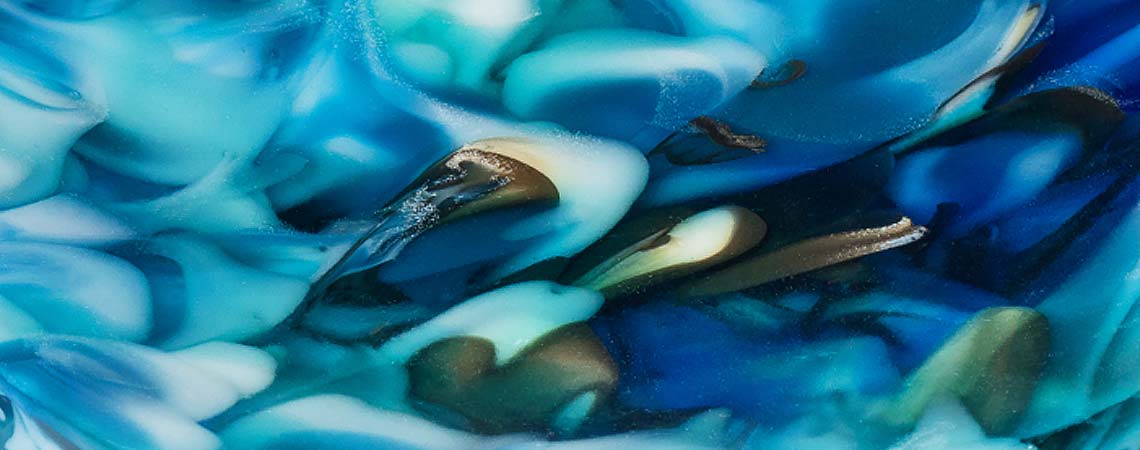Glass fusing begins in the mind and becomes a creative handcraft, culminating in the moment when the finished artwork is taken from the kiln. In this form of glass art, a number of different glass components are melted at a high temperature and fused together.
Andrea Kummli’s inspiration leads her to carry out an innovative comparison between the imagined artwork and possible approaches to achieving her goal. Driven by curiosity, a thirst for knowledge and a determination to succeed, she produces some astounding results. Her many years of experience encourage her to experiment and to combine effects.
Technical skills are necessary, too, when it comes to calculating the firing curve, as well as a basic knowledge of chemistry, physics, mathematics and geometry.
With careful scheduling of the individual firing steps, the desired metamorphosis will take place in the kiln at around 800°C. Depending on the object, a number of different firing steps may be required to produce the desired shape. Afterwards, the edges are coldworked on the grinder and by hand.
After the object has cooled down, the finishing touches can be applied by means of sandblasting: indentations can be made in the surface, or the surface may be roughened, etched, ground, engraved or fire polished. These processes help to give the glass object its distinctive character. Glass fusing is always a long, intensive process but it produces superb results.
